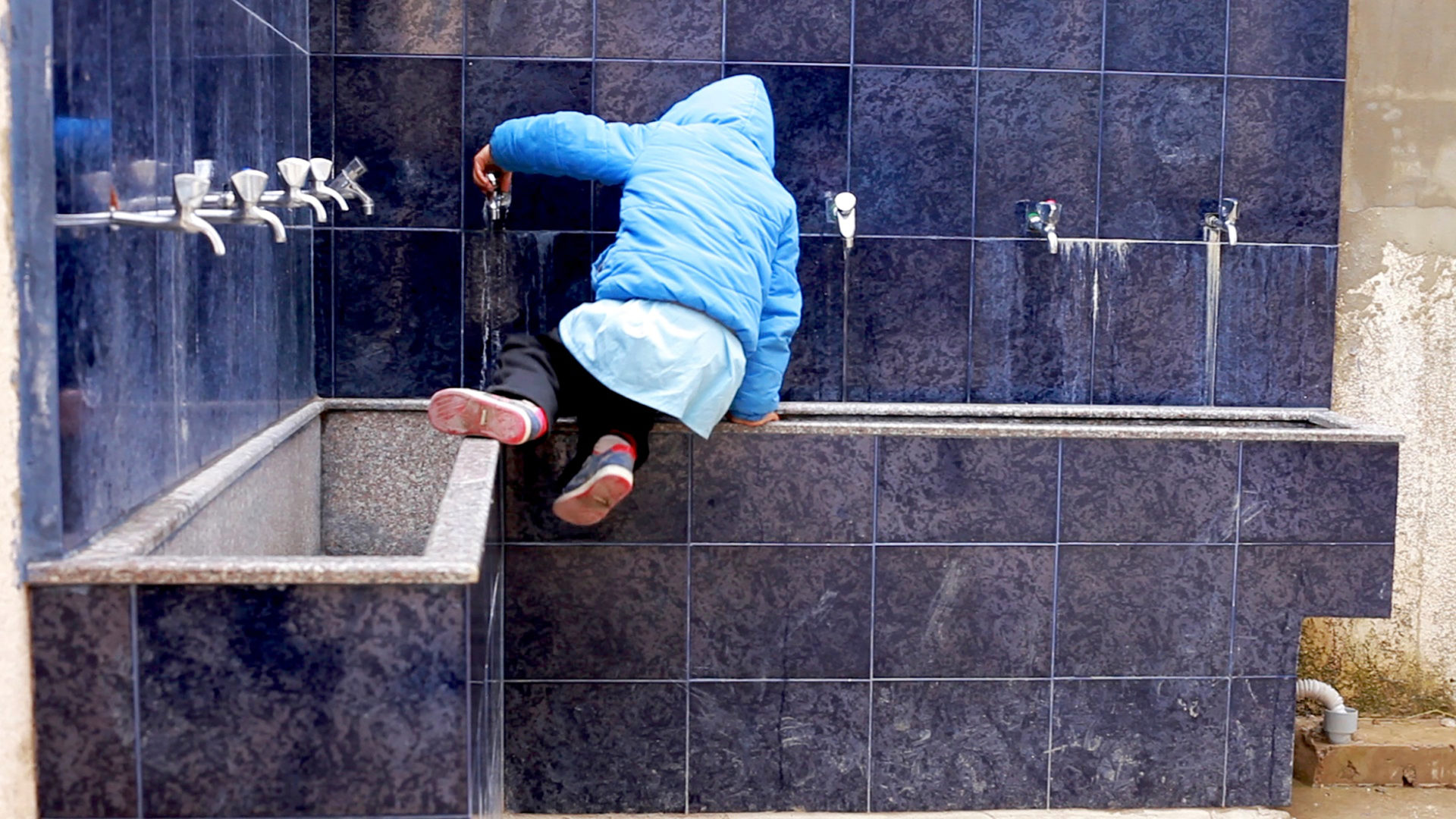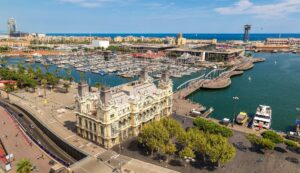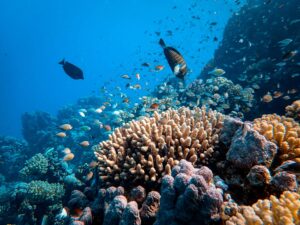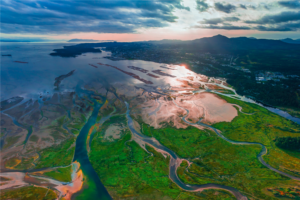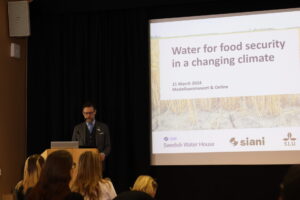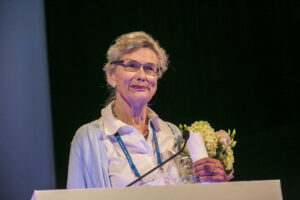Museums raise the bar of the water debate
They come in all shapes and sizes – and from all over the world. Some focus on science, others on natural or social history, and others on archeology. Some would be classified as “open air”, organized around specific bodies of water or attractions. At least one is virtual. A global network of museums wants to contribute to a raised awareness of water challenges.
This article was written by Bill Hinchberger and appeared first in WaterFront.
Photo: Nigol Bezjian, Me, Water, Life, 2017
In partnership with the United Nations Educational, Scientific and Cultural Organization (UNESCO), 29 water museums are joining forces to lead the way to create a global network of like-minded institutions. Another 12 have expressed interest in coming on board. By all accounts they represent just the tip of the iceberg. Network proponents have already identified about 80 loosely defined water museums around the world, and they’re sure they’ll find more. “We should be able to identify at least two times that,” said Clive Adams, founding director of the Center for Contemporary Art and the Natural World in the United Kingdom. “There was nobody from America or Russia. There is a lot more work that we should do to engage people.”
The largest member of the new club is the National Water Museum of China in Hangzhou, the southern terminus of the ancient Grand Canal waterway. It boasts 50,000 square meters, ten floors, and attracts more than a half million visitors per year. On the other side of the spectrum sits the Musée de l’Eau de Ouagadogou in Burkina Faso, which receives 5,000 visitors a year and focuses in large part on teaching hygiene and sanitation.
The leaders of these institutions share a vision of the need to develop a new paradigm of water management in the face of climate change and in the context of the Sustainable Development Goals, the set of 17 goals with 169 targets that the UN member states have agreed to try to meet by 2030. SDG 6 aims specifically to “ensure availability and sustainable management of water and sanitation for all.” Many believe that water management is essential to the achievement of most, if not all, of the SDGs.
“We have to try to understand the links between present civilizations and past water civilizations,” said Eriberto Eulisse, director of Centro Internazionale Civiltà dell’Acqua, an Italian non-governmental organization based in Venice, and a key proponent of the global network. “We have to look at perceptions of water and the use of water. Museums do this every day: they organize, display and interpret.”
Representatives from the 29 institutions met in May in Venice for a three-day workshop titled Towards a Global Network of Water Museums. Among other things they agreed to return home to work with UNESCO representatives in their countries to discover other prospective members. UNESCO has launched a formal process that should lead to the network’s adoption by member states as a formal project in June 2018. In parallel, members of the new group are planning to meet again next year in the Netherlands. By then the network should have its own website and newsletter.
Meanwhile, many institutions are contemplating bilateral efforts to pursue things such as joint exhibitions, research projects and publications. “There was a broad spectrum of organizations at the conference,” said Graham Boxer, head of museums of the Canal River Trust, a charitable group in the United Kingdom that oversees the canals that were built for transportation during the industrial revolution. “Despite the broad range, there was a clear idea of the actions we can take to support each other in areas such as collections and interpretation.”
A core group led by Eulisse and his organization, the Venice-based UNESCO Regional Bureau for Science and Culture in Europe, and UNESCO’s International Hydrological Program (IHP) started working on the network and the Venice event a couple of years ago, said the Italian NGO leader. But people had been kicking the idea around for a long time, according to Alexander Otte, associate programme specialist at IHP-UNESCO. “IHP already mapped a certain number of museums in its work of the last half decade,” he added. The IHP also helped identify leading water scholars and experts who can work as advisors to museums and the network.
At the Venice confab, each institution was given an opportunity to make a presentation about its activities. Participants had a few consensus choices about what impressed them most. The Yazd Water Museum in Iran features, among other things, a gravity-fed water extraction system called qanat, part of a historic hydraulic structure, some of which remains in use, noted Otte. As Eulisse explained it, the difference in temperature between the surface and the underground canals “allows you to collect humidity and produce water” in the arid region.
On the Mura River in Slovenia, the last remaining floating mill for the production of traditional flour attracts visitors. Eulisse said there were 92 such mills a century ago. The Ouagadogou museum left an impression for its work on hygiene, conservation and education. “It is a very local museum, but it shows how to handle water properly, in both traditional and contemporary ways,” said Otte. “It is a true institute of informal education.” As Boxer put it, “absolutely fascinating.”
The Canal and River Trust is a non-profit group that emerged when the UK government spun off oversight of the canals following the 2010 financial crisis. As head of museums, Boxer runs two institutions: the National Waterways Museum at Ellesmere Port and the Gloucester Waterways Museum. The former boasts “the only comprehensive collection of life on the canals,” he said, including a collection of boats that plied the waterways for two hundred years. Tools, steam and diesel engines, artworks, oral histories and photographs also help narrate the economic and social history of industrial revolution along the canals.
The various institutions “tell different histories,” Eulisse noted. “You can discover different water worlds created locally by different cultures – and which are in severe danger of disappearing.”
A ceremony to symbolically launch the network in Venice’s historic Saint Mark’s Square was led by members of the Water Tribunal of Valencia, Spain. The eight members of this long-standing, traditional and democratically-elected body meet every Thursday at noon in front of the Apostles gate at the city’s cathedral. For hundreds of years, the tribunal’s job has been to resolve disputes over the use of the irrigation canals that surround the city. Its jurisdiction covers 11,691 landholders and 3,471 hectares in 23 municipalities.
Moving forward, one of the most ambitious projects is in Venice itself, where Civiltà dell’Acqua has the backing of the municipality to set up a permanent museum. With its famous canals, Venice will always be associated with water, but Eulisse and others want to tell a fuller story. “Venice had no fresh water supply for centuries,” he said. “Now you just turn on the tap. It seems like an unlimited resource. We should enrich our perception to stimulate a new paradigm of water management.”
Eulisse and Adams have visited buildings that could serve as a permanent home to the Venice Water Museum near the home of the Venice Biennale, one of the world’s premiere international art shows, in the Arsenale Nord district. An intermediate step could be an exhibition of water art as part of or in parallel with the next Venice Biennale in 2019, Eulisse said. “At the next Venice Biennale, we want to have different artists reflect on water, water scarcity, and climate change,” Eulisse said.
Adams will probably take the lead in identifying the artists. He started his career as a curator in the 1970s working with landscape artists such as Richard Long, who were incorporating environmental concerns in their work. Especially given growing concerns about climate change, a growing number of contemporary artists are turning to water as a subject matter or even as a material. A US native, Basia Ireland’s work “focuses on international water issues, especially rivers, waterborne diseases, and water scarcity.” One of her projects brought together communities along the Rio Grande River that separates her country from Mexico. Britain’s Jason deCaires Taylor creates underwater sculptures that address the human condition. Among the works of the British live artist, sculptor and filmmaker Amy Sharrocks is the Museum of Water, a collection of donated water samples and their accompanying stories.
Adams has been trying to bridge the gap between water experts, including those who run water museums, with some of these artists. “When Eriberto told me about the conference, I said that many artists engage with water,” he recalled. “I said why not enliven the conference with some crazy artists?” While the Venice edition couldn’t bring that off, Adams hopes that artists will be invited to future conferences.
Mainstream art institutions have been slow to pick up on water art, Adams said. “I have found that few public galleries have a particular interest in art and ecology, notable exceptions being one in Sittard in the Netherlands and the Pori Art Museum in Finland,” he said.
“An exhibition ‘Water.War,’ accompanied by an excellent publication, was recently organized by Gluon in Brussels. Recently launched in Geneva, ‘Aqua’ is a worldwide travelling exhibition organized by Art for the World in partnership with UN Water.”
New technologies won’t be enough to solve the crisis of water management, said Eulisse. “A water museum can help take ideas from the past to help build a new more sustainable future.”
“Museums are only valuable,” noted Boxer, “if they are relevant to the present and the future. We need to find ways to tell the full story.”
This article was written by Bill Hinchberger and appeared first in WaterFront.
